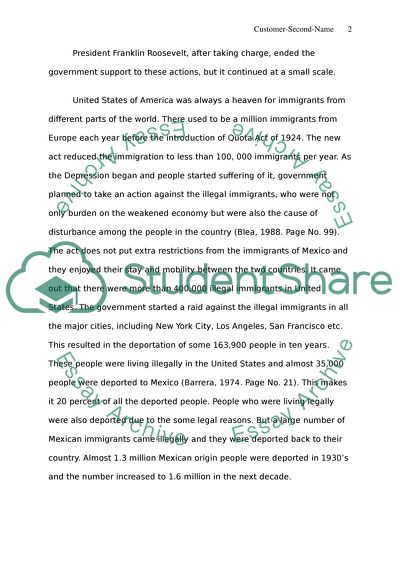Cite this document
(Repatriation of Mexico in 1930's Essay Example | Topics and Well Written Essays - 2000 words, n.d.)
Repatriation of Mexico in 1930's Essay Example | Topics and Well Written Essays - 2000 words. https://studentshare.org/history/1510865-mexican-repatriation-of-the-1930s
Repatriation of Mexico in 1930's Essay Example | Topics and Well Written Essays - 2000 words. https://studentshare.org/history/1510865-mexican-repatriation-of-the-1930s
(Repatriation of Mexico in 1930'S Essay Example | Topics and Well Written Essays - 2000 Words)
Repatriation of Mexico in 1930'S Essay Example | Topics and Well Written Essays - 2000 Words. https://studentshare.org/history/1510865-mexican-repatriation-of-the-1930s.
Repatriation of Mexico in 1930'S Essay Example | Topics and Well Written Essays - 2000 Words. https://studentshare.org/history/1510865-mexican-repatriation-of-the-1930s.
“Repatriation of Mexico in 1930'S Essay Example | Topics and Well Written Essays - 2000 Words”. https://studentshare.org/history/1510865-mexican-repatriation-of-the-1930s.


